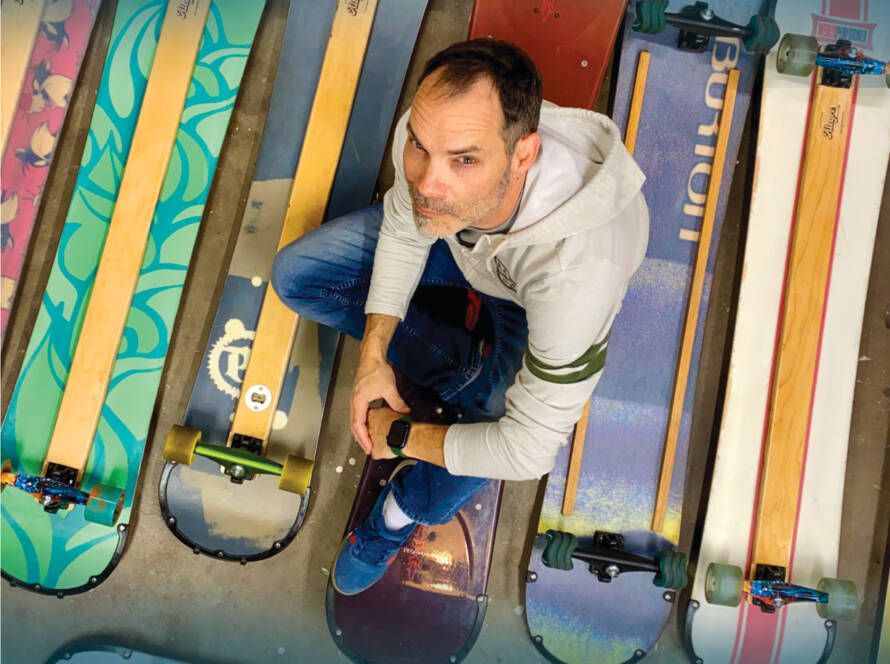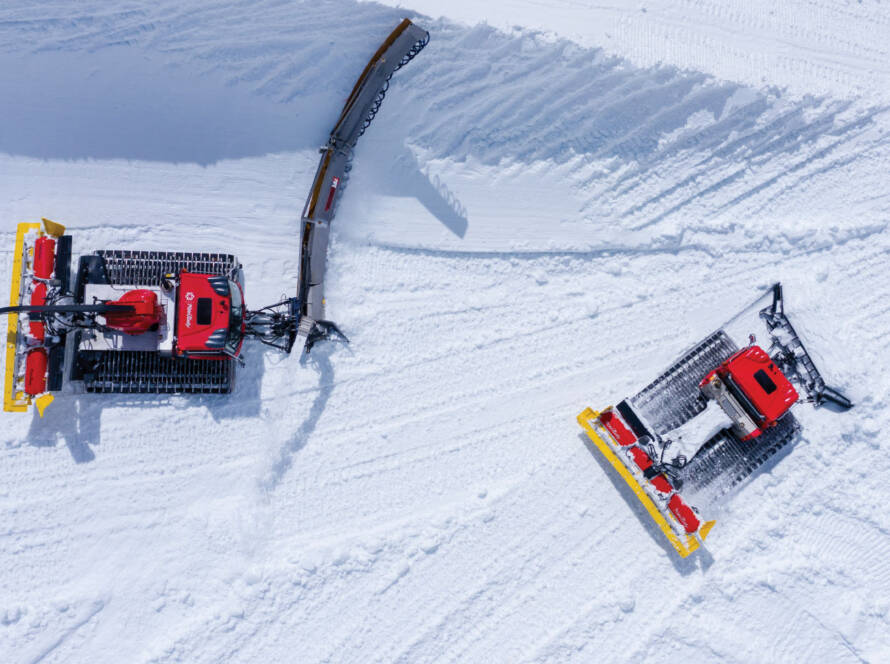Recently introduced Snow-Bright™ slope lighting promises and delivers perfect visual clarity on snow using 85 percent less electricity than conventional lamps and lasts 600 percent longer. That’s a big deal for operations managers who need to increase the bottom line while improving customers’ night skiing and riding experiences.
With low capital costs and high returns, Snow-Bright™ technology has already been adopted by popular areas like Steamboat Springs, Powder Mountain, Blue Hill, Windham Mountain, Snow King in Jackson Hole, Campgaw, Mount Peter and many more. In fact, the brand new, private “All-Out” race training and event venue at Werner Mountain features Snow-Bright™ illumination. The launch of “All-Out” is featured on YouTube.
Snow-Bright™ lighting solves several critical problems mountain ops is experiencing with light emitting diode fixtures (LEDs) that include snow and ice build-up, flicker, humming ballasts, narrow beam and extreme glare. That’s because Snow-Bright™ uses magnetic induction bulbs that were actually invented by world-renowned scientist Nikola Tesla – the man after whom the Tesla electric car company is named.
Philip Gotthelf, founder and managing director of Ultra-Tech™ Lighting, which manufacturers and distributes Snow-Bright™ as well as other specialty lighting, looked back to cutting edge technology from the 1800s to recreate the “Forever Bulb,” as it was named by Tesla, because there are no parts that can burn out. For mountain ops, it means a fixture that has a rated lifecycle exceeding 100,000 hours; that’s 11 years burning 24 hours a day, 365 days a year.
For ski areas that are closed in the summer, Snow-Bright™ technology can last more than half a century with literally no significant maintenance. An added benefit is that they are lightweight. Typically, a 300-watt Snow-Bright™ fixture weighing 23 pounds (10.5 kg) can replace a 1,000-watt metal halide fixture weighing up to 90 pounds (40.8 kg).
“Snow-Bright™is opening up entirely new business models for ski areas. Unlike daytime skiing, night skiing under Snow-Bright™ is consistent; light never goes flat or changes angle with variations in clouds or sun angle.”
Snow-Bright™ fixtures range in power from 60 watts to 400 watts and are direct replacements for conventional lighting like high-pressure sodium or metal halide from 200 watts to 1,500 watts. This remarkable energy savings is accomplished by eliminating wasteful heat and portions of the spectrum in the ultraviolet and infrared range that may be measured on a light meter, but cannot be seen by the human eye.
For Snow-Bright™ lamps, the spectrum is specifically tuned to the refractive properties of snow. Rather than directly bouncing off the snow surface, Snow-Bright™ light travels from crystal to crystal to create a glow that resolves all the surface features. Gotthelf has trademarked his technology as LumenTec®.
Snow-Bright™ fixtures have gone through an extensive vetting process that included the U.S. National Forest Service, Jackson Hole’s Environmental Commission, the Steamboat Springs Town Council and even the University of Wyoming Infrared Observatory. Critical features for today’s “Sustainability Movement” include rapid light dispersion and dissipation to comply with dark sky guidelines and dead silent ballasts to avoid disturbing bats and canine species.
Unlike high intensity LEDs, Snow-Bright™ employs non-harmful light radiation that does not damage the human eye or interfere with wildlife circadian rhythms. Too often, technology is deployed only to discover that it conflicts with new environmental standards or may have health risks. That is why Snow-Bright™ was carefully designed to meet all the needs of snow sports venues. From race slopes to beginner areas and tubing parks and even parking lots where black ice can be a problem, Snow-Bright™ has developed a solution.
Magnetic induction lighting has an interesting and provocative history. Back in the late 1800s, physicists were scrambling to invent artificial lighting to replace old gas lamps that were unreliable, dangerous and poor light sources. Top among these scientist engineers were names such as Tesla, Edison and Thompson.
While Edison’s incandescent bulb made him famous, industrialist and competitor Nicola Tesla patented (in 1894) a new lamp using a magnetic induction field that creates ions that excite atoms to fluoresce onto a phosphorus coating inside the bulb. Since electric lighting was just getting started, Edison thought a Forever Bulb was a terrible business model, even if it was substantially more efficient because you would only sell a bulb once. Today’s new drive toward sustainability makes Tesla the winner in the end.
Gotthelf saw the need to improve lighting at locations such as ski hills, ports, gas bars and parking lots as well as other sites using lighting that goes beyond what was currently available.
“We developed a modern approach to induction lighting that we fine-tune for each application,” he said, and points to examples such as lighting that can sterilize a hospital operating room, a light that is perfect for jewelers to display gems or Snow-Bright™.
Snow-Bright™ is opening up entirely new business models for ski areas. Unlike daytime skiing, night skiing under Snow-Bright™ is consistent; light never goes flat or changes angle with variations in clouds or sun angle. This makes nighttime skiing safer and more productive for race and freestyle training as well as events. By using nighttime hours for training and events rather than the day, more of the mountain can be used by recreational customers during normal hours.
According to Gotthelf, there are added benefits because magnetic induction lights don’t flicker like LEDs, fluorescents or aging, high-pressure sodium lamps.
“This is an important consideration for site security where cameras are used,” he said. “Flickering light can interfere with video recording and may distort the action in playback due to poor light quality and strobe effect.”
Ultra-Tech’s lighting also aids snow resort workers. Their Work-Bright™ line emits a high contrast spectrum that reduces eye strain and makes it easier to find things like dropped tools, screws and nails on job sites. “Workers at Steamboat were mentioning it would take 10 minutes to find small items in the shop. With Work-Bright™, everything is clearer, saving time and improving productivity.
“We are comparably priced with LED, maybe even a little cheaper, but our lights do so much more and they do it better in wavelengths that are more comfortable for both people and nature. Payback is typically reported as ROI in two to three years. However, some resorts have told us they have seen a return in as little as one month because there is minimal ‘in-rush’ current – the amount of power required to start the fixtures.
“We may have looked to the past for ideas for Ultra-Tech’s cutting edge light solutions, but there is nothing old about saving time and money with a product that just works better in our environment. Now, with more types of lighting on the market, it pays to do your homework,” said Gotthelf.

